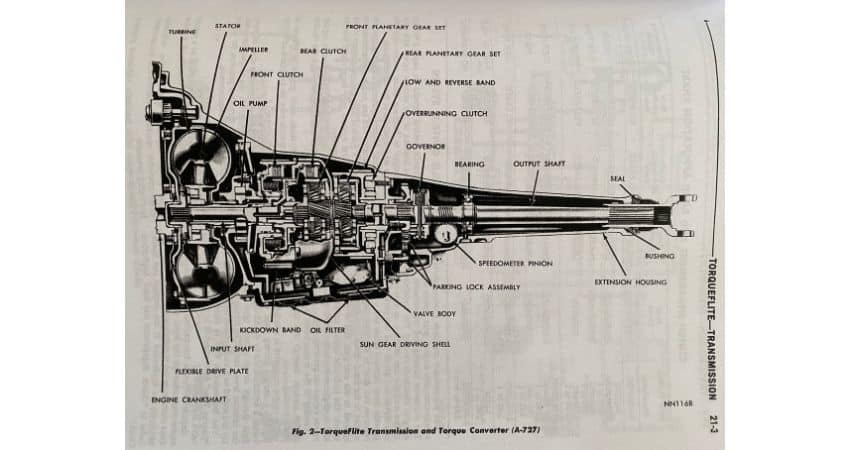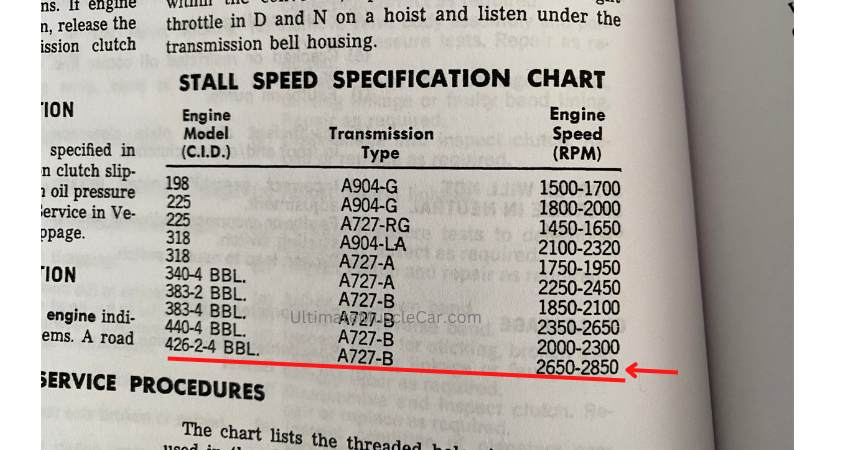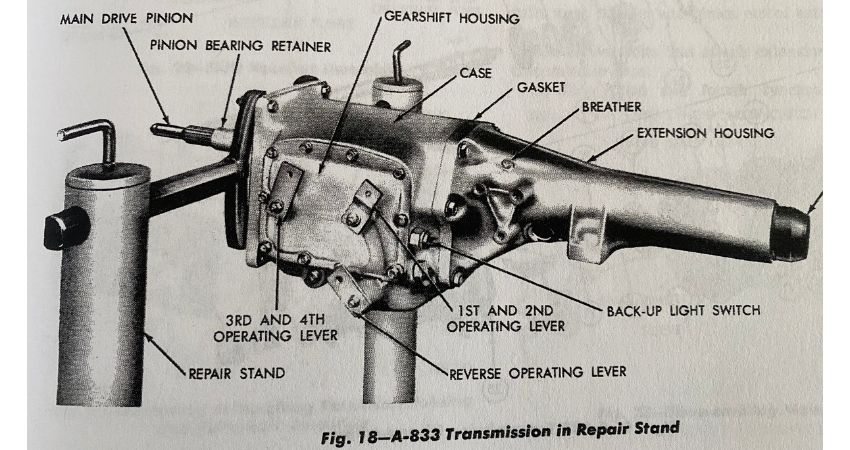Transmissions a 426 Hemi Used
The 426 Hemi is spoken about all the time. The less celebrated transmission doesn’t come up as often. After all, it plays an important role in the transfer of all that power. Therefore, let’s discuss what transmissions came with the 426 Hemi.
The 426 Hemi came with two different transmissions, either the A-727 Torqueflite automatic transmission or the A-833 manual transmission. The automatic had 3 forward speeds and a reverse. The manual had 4 forward speeds and a reverse.
This article will examine both of the transmission options in more detail including their gear ratios. In addition, I’ll take a close look at how the Hemi versions differed from the ones produced for less powerful engines.
The following transmission specifications and facts were learned from my personal experience and research, Mopar engine manuals, webinars, books and articles.
426 Hemi Transmissions
The Hemi came with either a 4-speed manual transmission or a 3-speed automatic transmission.
The ones produced for the Hemi were much different than the standard versions. Let’s examine each Hemi transmission and take a closer look at those differences.

A-727 Torqueflite Automatic Transmission
If someone checked the box for an automatic for their Hemi, they would get an A-727 Torqueflite.
All Hemi Torqueflites had three forward speeds, a reverse speed and a park. The following are the gear ratios:
- 2.54:1 1st gear
- 1.45:1 2nd gear
- 1.01:1 3rd gear
- 2.21:1 reverse gear
All 727s for the Hemi years had an aluminum case which was great for saving weight.
The transmission remained the same from 1966 through 1971 except for a flex plate change in 1968. From 1968 on, the flex plate had a larger center hole than previous years.
The Differences Between a Hemi A-727 Torqueflite and a Regular One.
- Hemi transmissions have a wider front clutch retainer holding five friction discs instead of four.
- The kick down band is wider.
- The stator support has a tapered, angled support taller than the shorter, stepped support of the regular transmission.
These differences can be seen in the photo above.
Torque Converter Differences
- The torque converter in a Hemi has a 2,650 to 2,850 stall speed.
- The torque converter has larger 7/16 mounting bolts.

A-833 4-Speed Manual Transmission
All 426 Hemi 4-speed transmissions have 4-speeds and a reverse gear. The case is made out of iron making it heavy and tough to change a clutch from underneath the car.
With the front of the car on jack stands, I used to pull one of these while laying on the ground outside in the cold. Believe me, it’s not easy but in a strange way it is fun. I think you can relate.
Input Shaft
With the exception of a few early 1966 cars, all later 1966 Hemi cars through 1971 has a 18-spline input shaft instead of a 23 spline shaft.
The 18 spline is considered beefier and stronger than the 23 spline shaft.
From 1966 to 1971, only 426 Hemi and 440 engines came with the 18 spline transmission.
Gear Ratios
The 18 spline version has slightly different 1st, 2nd and 3rd gear ratios depending on the year.
The following are the gear ratios for the 1966-1970 Hemi manual transmission:
- 2.65:1 1st gear
- 1.93:1 2nd gear
- 1.39:1 3rd gear
- 1.00:1 4th gear
The following are the gear ratios for the 1971 Hemi manual transmission:
- 2.44:1 1st gear
- 1.77:1 2nd gear
- 1.34:1 3rd gear
- 1.00:1 4th gear
Other Differences Between a Hemi A-833 4-speed and Others
- The Hemi 4-speeds have Oilite bushings lining each of the gears.
- The teeth on the gears are angled for more strength.
- The larger input shaft has a larger bearing and retainer.
- A course (18) spline clutch disc.
426 Hemi Clutch Disc
The Hemi and the 440 have an 11″ clutch disc and the same part numbers. The 383 also has an 11″ disc, but it is slightly different and they have different part numbers.
426 Pressure Plate
The Hemi and 440 have different pressure plates with different part numbers. They both have 12 springs, but the Hemi has three rollers instead of six.
Find out why the Hemi was banned twice in my article, Why the 426 Hemi was Banned From Nascar.
More 426 Hemi Transmission Facts
The Torqueflite transmission could come with a column shifter or a floor mounted shifter with a console.
1970 was the first year for the console mounted Slap Stik shifter. The Slap Stik allowed the driver to manually bang the shifter handle from one lower gear to the other without bypassing the next gear or slipping into neutral.
The Hemi 4-speed could come in a floor mounted shifter with or without a console.
Find out the real reasons why it’s called the elephant engine in my article, Why the 426 Hemi is Called the Elephant Engine.

Find out about the mythical 426 Hemi DOHC in my article, The 426 Hemi Dual Overhead Cam Engine – The “Doomsday Hemi”
Which One Costs More?
Using the 1970 Cuda and Challenger as an example, the cost of the Torqueflite varied depending on the engine. The following were the extra costs of the Torqueflite:
- $190.25 extra with a 225 Slant Six
- $202.05 extra with a 318.
- $216.20 extra with a 340 Cuda, 383 2-barrel Barracuda or Gran Coupe.
- $227.05 extra behind a 383 4-barrel, 440, 440 Six Pack or a 426 Hemi.
The following was the extra cost for the Hemi 4-speed:
$194.85 was the extra charge over the standard 3-speed.
Read more Mopar engine transmission articles:
Any questions or if you have more information you’d like to contribute, send us an email found on our contact page.
Read More 426 Hemi Articles!
426 Hemi Specifications – Complete Engine Specs
The First Year of the 426 Hemi
How Fast is a 426 Hemi? 1/4 Mile & 0-60 Results
How Much An original 426 Hemi Car is Worth: Recent Prices
What Hemi Means in an Engine: Generation 1, 2 and 3 Hemis
Hemi Engines Made Before the 426 Hemi
Article resources
- Hemmings: Chrysler A-727 Transmission
- Wikipedia: Torqueflite
- Google books: How to Rebuild and Modify Chrysler 426 Hemi Engines
- Google books: The Definitive Plymouth Barracuda and Dodge Challenger Guide: 1970-1974
